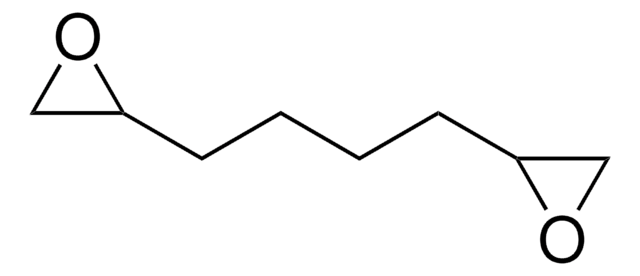If this product has an expiration or retest date, it will be shown on the Certificate of Analysis (COA, CofA). If there is no retest or expiration date listed on the product's COA, we do not have suitable stability data to determine a shelf life. For these products, the only date on the COA will be the release date; a retest, expiration, or use-by-date will not be displayed.
For all products, we recommend handling per defined conditions as printed in our product literature and website product descriptions. We recommend that products should be routinely inspected by customers to ensure they perform as expected.
For products without retest or expiration dates, our standard warranty of 1 year from the date of shipment is applicable.
For more information, please refer to the Product Dating Information document: https://www.sigmaaldrich.com/deepweb/assets/sigmaaldrich/marketing/global/documents/449/386/product-dating-information-mk.pdf
338036
Neopentyl glycol diglycidyl ether
technical grade
Synonym(s):
1,3-Bis(2,3-epoxypropoxy)-2,2-dimethylpropane, 2,2′-[(2,2-Dimethyl-1,3-propanediyl)bis(oxymethylene)]bis[oxirane]
About This Item
Recommended Products
grade
technical grade
vapor density
>1 (vs air)
form
liquid
eq. wt.
135-165 g (epoxide)
refractive index
n20/D 1.457 (lit.)
viscosity
10-30 mPa.s(25 °C)
bp
103-107 °C/1 mmHg (lit.)
density
1.04 g/mL at 25 °C (lit.)
SMILES string
CC(C)(COCC1CO1)COCC2CO2
InChI
1S/C11H20O4/c1-11(2,7-12-3-9-5-14-9)8-13-4-10-6-15-10/h9-10H,3-8H2,1-2H3
InChI key
KUAUJXBLDYVELT-UHFFFAOYSA-N
Related Categories
General description
Application
- As a cross-linking agent to prepare Pullulan/polydopamine hydrogels for selective adsorption of pollutant cationic dyes.[1]
- As a monomer to synthesize gel polymer electrolytes for Li-ion batteries via cationic ring-open polymerization.[2]
- As a precursor for the synthesis of hybrid epoxy methacrylate resins cationic and free-radical photopolymerization. These epoxy resins can be used as anti-corrosion and decorative coatings.[3]
- To synthesize epoxy nanocomposites for fabrication of light-emitting devices.[4]
Signal Word
Warning
Hazard Statements
Precautionary Statements
Hazard Classifications
Skin Irrit. 2 - Skin Sens. 1
Storage Class Code
10 - Combustible liquids
WGK
WGK 1
Flash Point(F)
235.4 °F - closed cup
Flash Point(C)
113 °C - closed cup
Personal Protective Equipment
Choose from one of the most recent versions:
Already Own This Product?
Find documentation for the products that you have recently purchased in the Document Library.
Customers Also Viewed
-
How can I determine the shelf life / expiration / retest date of this product?
1 answer-
Helpful?
-
-
How is shipping temperature determined? And how is it related to the product storage temperature?
1 answer-
Products may be shipped at a different temperature than the recommended long-term storage temperature. If the product quality is sensitive to short-term exposure to conditions other than the recommended long-term storage, it will be shipped on wet or dry-ice. If the product quality is NOT affected by short-term exposure to conditions other than the recommended long-term storage, it will be shipped at ambient temperature. As shipping routes are configured for minimum transit times, shipping at ambient temperature helps control shipping costs for our customers. For more information, please refer to the Storage and Transport Conditions document: https://www.sigmaaldrich.com/deepweb/assets/sigmaaldrich/marketing/global/documents/316/622/storage-transport-conditions-mk.pdf
Helpful?
-
Active Filters
Our team of scientists has experience in all areas of research including Life Science, Material Science, Chemical Synthesis, Chromatography, Analytical and many others.
Contact Technical Service









![Bis[4-(glycidyloxy)phenyl]methane mixture of isomers](/deepweb/assets/sigmaaldrich/product/structures/915/436/edb8eab6-834e-4238-a904-bf72c573b686/640/edb8eab6-834e-4238-a904-bf72c573b686.png)
